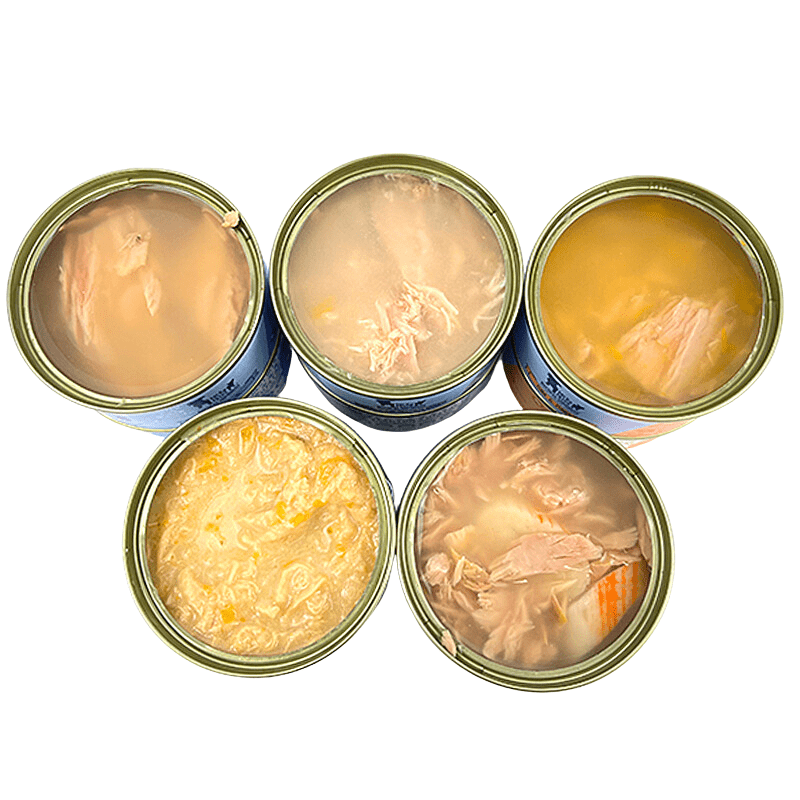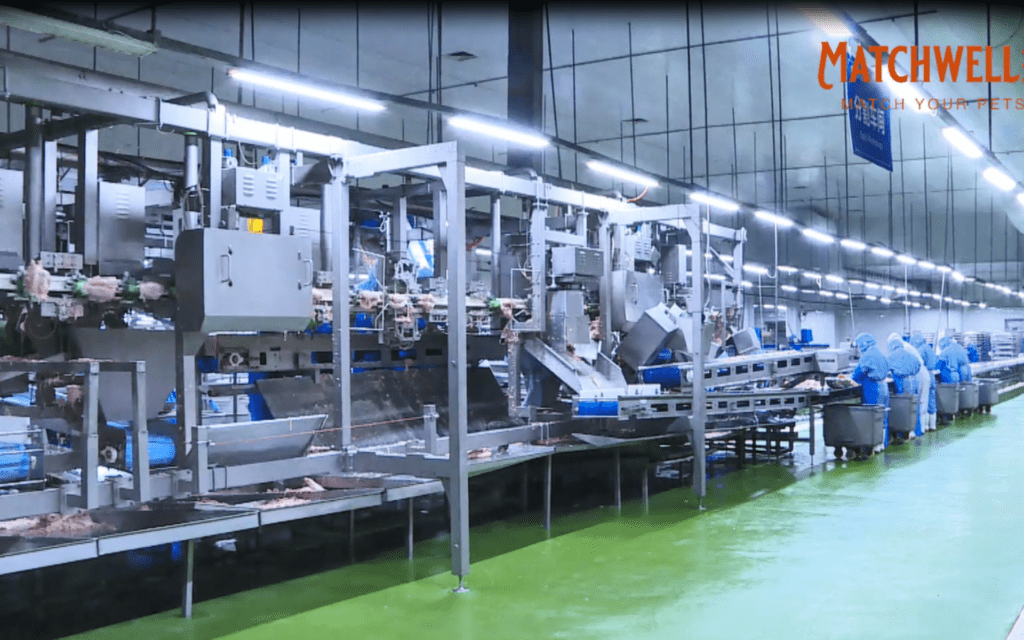When it comes to supplying the needs of today’s pet-loving consumers, there’s no doubt that canned cat food remains a perennial favorite. Retailers and distributors alike face a growing demand for high-quality yet budget-friendly cat food options. In recent years, buying cheap canned cat food in bulk has become an increasingly attractive strategy for those looking to boost profit margins, meet customer expectations, and expand product offerings. But how can you ensure that the cat food you’re stocking up on is not only affordable but also meets the quality standards expected by discerning consumers?
In this guide, we’ll break down the nuances of the bulk pet food market, highlight key considerations for quality assurance, provide insider tips on navigating the global supply chain, and show you why cheap canned cat food in bulk could be your next big business opportunity. Whether you’re running a small independent shop, managing the shelves of a large supermarket chain, or operating an online wholesale store, understanding this market segment thoroughly can help you stand out.

(For tailored pet treats and OEM/ODM manufacturing solutions, you can explore Matchwell Pets for a wide range of wholesale pet treats, private label options, and more.)
Table of Contents
- Market Overview: Why Demand for Bulk Canned Cat Food Is Soaring
- Key Considerations: Balancing Cost, Quality, and Brand Perception
- Sourcing Strategies: Domestic vs. International Suppliers
- Ensuring Quality: Certifications, Ingredient Sourcing, and Transparency
- Packaging Innovations: Extending Shelf Life and Reducing Waste
- Private Label and White Label Opportunities
- Real-Time Market Data and Trends (2023–2024)
- Practical Tips: Negotiation, Logistics, and Storage
- Tapping into the Wholesale Pet Treats Ecosystem
- Conclusion: Making Smart Bulk Purchase Decisions
1. Market Overview: Why Demand for Bulk Canned Cat Food Is Soaring
The global pet food market has shown remarkable resilience and growth over the past decade. According to a 2023 report from Grand View Research, the worldwide pet food market is estimated to reach USD 110 billion by 2027, expanding at a CAGR of around 4.5%. Within this ecosystem, cat food—specifically wet and canned varieties—has gained a loyal consumer base. Health-conscious pet owners often prefer canned cat food due to its higher moisture content, cleaner ingredient lists, and palatability.

Why Bulk? Wholesale and bulk buying of canned cat food appeal to various stakeholders. For retailers and distributors, buying in bulk can significantly reduce per-unit costs. This strategy is essential when competing with large supermarkets, e-commerce giants, and other major players who offer competitive pricing. For B2B buyers, whether it’s an online Amazon wholesaler or a brick-and-mortar pet supply store, investing in bulk canned cat food helps maintain consistent inventory levels, improve profit margins, and ensure stable pricing structures.
2. Key Considerations: Balancing Cost, Quality, and Brand Perception
While chasing the lowest price point may seem tempting, it’s vital to remember that consumers today are savvy. They read labels, compare ingredients, and look up brand reputations online. Offering cheap canned cat food doesn’t mean compromising on quality. Striking the right balance between affordability and nutritional value ensures that your brand stands out as both cost-effective and responsible.
What to Look For in Product Specifications:
- Protein Sources: Ensure the product lists real meat (such as chicken, tuna, or salmon) as the primary protein source.
- Additives and Fillers: Check for unnecessary fillers, preservatives, or artificial colors that might deter health-conscious consumers.
- Certifications: Seek products with recognized certifications that guarantee food safety and quality.

3. Sourcing Strategies: Domestic vs. International Suppliers
The cat food supply chain has become increasingly globalized. Depending on your market, you may source canned cat food domestically or from international suppliers.
Domestic Suppliers:
- Pros: Faster shipping times, easier quality checks, and potentially stronger legal recourse if issues arise.
- Cons: Higher labor and production costs often lead to higher wholesale prices.
International Suppliers (e.g., from Asia or Eastern Europe):
- Pros: Lower manufacturing costs can translate into cheaper bulk prices.
- Cons: Longer lead times, potential language barriers, and more complex logistical considerations.

Identifying a reputable supplier is key. Some manufacturers specializing in OEM and ODM can offer custom formulations that meet your brand’s nutritional standards. This route is especially attractive if you’re looking into private label pet treats and want to maintain a distinctive identity in a crowded marketplace.
4. Ensuring Quality: Certifications, Ingredient Sourcing, and Transparency
Quality assurance results from strict adherence to industry standards and transparency in the production process. Look for suppliers who can provide:
- Global Certifications: Such as ISO 22000, BRC, IFS, and others recognized in your target market.
- Ingredient Testing: Routine checks for pesticide residues, heavy metals, and pathogens.
- Nutritional Testing: Validation that the product meets AAFCO (Association of American Feed Control Officials) or corresponding regional nutritional guidelines.
Don’t hesitate to request third-party testing results. Suppliers who maintain partnerships with well-regarded testing institutions (like Intertek or SGS) demonstrate a commitment to quality. This can be a valuable selling point to your retail partners and end consumers.

5. Packaging Innovations: Extending Shelf Life and Reducing Waste
Beyond ingredients, packaging plays a significant role in the quality and cost-effectiveness of bulk canned cat food. The right packaging ensures freshness, extends shelf life, and preserves nutritional value.
Packaging Innovations:
- Eco-Friendly Materials: Recyclable or biodegradable cans and labels appeal to environmentally conscious consumers.
- Portion Control Cans: Smaller cans packaged in bulk attract buyers who prefer variety and less food waste.
- Shelf-Stable Formulations: High-pressure processing and similar techniques help maintain quality without relying heavily on preservatives.
6. Private Label and White Label Opportunities
For businesses looking to differentiate themselves, private label and white label options provide a valuable pathway. Partnering with an OEM/ODM manufacturer enables you to customize recipes, branding, and packaging, ensuring that your product line stands out.

Why Consider Private Label or White Label?
- Brand Control: Decide on formulations, ingredients, and presentation.
- Flexible Pricing: Adjust margins according to your positioning—budget-friendly or premium.
- Customer Loyalty: A unique brand identity can foster repeat business and long-term relationships.
Matchwell Pets offers OEM/ODM solutions, giving you the chance to develop and produce your own line of wholesale cat treats or dog treats, tapping into a growing demand for customized, exclusive products.
7. Real-Time Market Data and Trends (2023–2024)
Recent years have seen interesting shifts in consumer behavior and industry capabilities:
- Rising E-Commerce Sales: In 2023, online pet food sales continued to surge, with platforms like Chewy and Amazon reporting double-digit growth in their pet categories. This trend is set to persist into 2024 and beyond.
- Focus on Health and Wellness: According to the American Pet Products Association (APPA), more than 40% of pet owners have chosen higher-quality, more natural pet food options over the past two years. Even budget buyers prioritize nutrition.
- Global Sourcing Hubs: China remains a prominent player in pet food manufacturing due to advanced infrastructure, lower production costs, and robust supply chains. In 2023, increasing numbers of U.S. and European wholesalers explored Chinese OEM/ODM partnerships to reduce costs.
- Premiumization Meets Value: While premium cat food brands are on the rise, there’s also a push for value-driven products that don’t sacrifice basic nutritional standards. Bulk buying makes it possible to offer an affordable option that still resonates with quality-conscious consumers.
(For more data, check reliable sources like Statista or Pet Food Industry for the latest reports.)

8. Practical Tips: Negotiation, Logistics, and Storage
Negotiation Tactics
When buying cheap canned cat food in bulk, negotiation is crucial:
- Volume Discounts: The more you buy, the bigger the discount. Compare suppliers to find the best bulk rates.
- Long-Term Contracts: Locking in long-term agreements can stabilize costs and protect you from market fluctuations.
- Flexible Payment Terms: Some suppliers may offer favorable payment terms (e.g., net 60 days) to help with cash flow management.
Logistics and Shipping
- Consolidate Shipments: Combine multiple SKUs into one large shipment to reduce freight costs.
- Diversify Shipping Routes: Consider multiple ports or distribution centers to mitigate delays.
- Track and Trace: Use reliable freight forwarders and implement robust tracking systems for transparent supply chain management.
Storage and Inventory Management
- Proper Warehousing: Keep canned foods in a cool, dry environment away from direct sunlight to maintain optimal shelf life.
- First In, First Out (FIFO): Rotate inventory to ensure older stock moves first, preserving product freshness.
- Monitoring Shelf Life: Track expiration dates and plan promotions around products nearing their “best by” date to minimize waste.

9. Tapping into the Wholesale Pet Treats Ecosystem
Though the focus here is on cheap canned cat food, the principles apply equally to other categories like wholesale dog treats and wholesale cat treats. Whether you’re introducing a line of cat pâté or branching out into freeze-dried, grain-free dog biscuits, diversifying your product range strengthens your position in the marketplace.
Embracing an ecosystem approach—where canned cat food is one part of a broader product portfolio—helps capture a larger share of the pet-loving market. OEM/ODM manufacturers that specialize in multiple product categories allow you to bundle offerings, provide complementary treats, and meet a wide range of customer needs.

10. Conclusion: Making Smart Bulk Purchase Decisions
Sourcing cheap canned cat food in bulk can be a game-changer for wholesalers, retailers, and online distributors seeking to differentiate themselves in a competitive marketplace. By carefully balancing cost and quality, exploring global supply chains, maintaining rigorous quality assurance processes, and leveraging private label opportunities, you can create a product lineup that satisfies both budget-conscious and nutrition-savvy consumers.
As the demand for affordable, high-quality cat food continues to grow, staying informed of market trends, certifications, and consumer preferences will help you navigate the complex world of bulk pet food sourcing. Whether you choose domestic suppliers or international OEM/ODM partners, the key is to prioritize transparency, quality, and value.
Ready to explore customizable and cost-effective pet food solutions? Visit Matchwell Pets to learn more about their wide range of wholesale pet treats, private label options, and OEM/ODM services tailored to your business needs.




